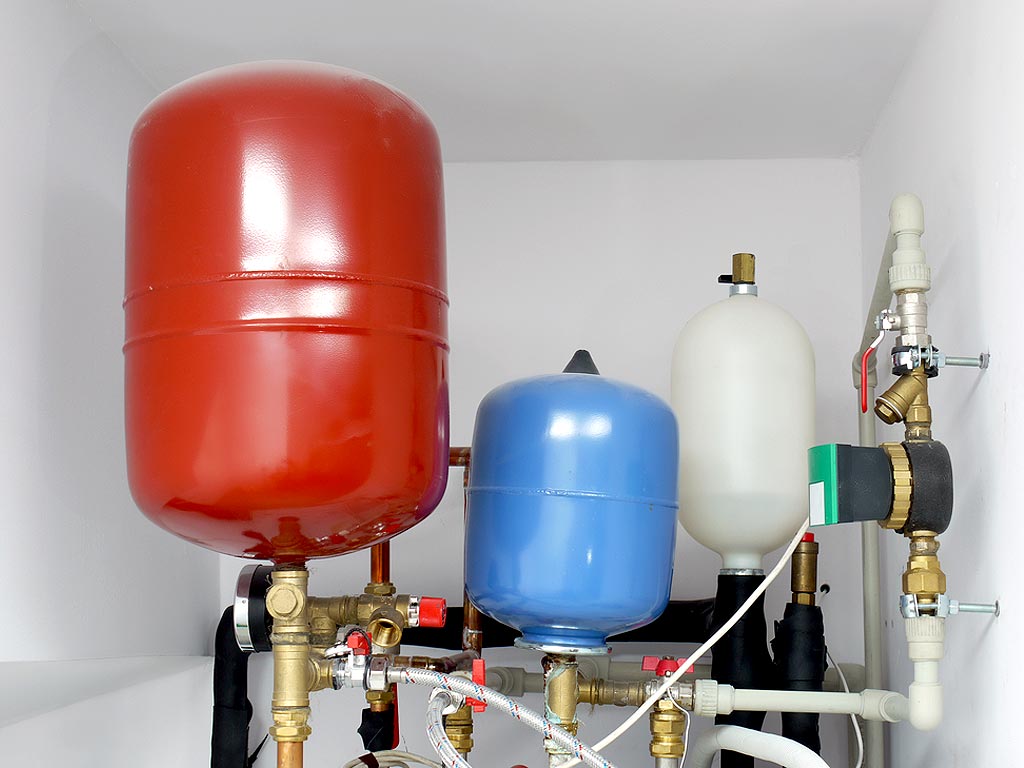Do you know what the benefits of a water heater expansion tank for your plumbing system? When you think about it, few appliances in your home must survive as grueling a set of conditions as your water heater. Water heaters remain constantly exposed to water, which puts them at risk of corrosion. Even worse are the problems that can be caused by the extreme pressures that occur within a water heater.

Not only can such pressure damage your water heater, but it can also end hurting the pipes and plumbing fixtures elsewhere in your home. To reduce the threat of high water pressure, many homeowners choose to install a so-called expansion tank. This article takes a closer look at plumbing expansion tanks and how they work.
Water Heater Pressure Varies
At first, you may not fully understand why water heaters are so vulnerable to high pressure. After all, the tank does not actively pressurize the water. However, as the water absorbs heat, it undergoes a volume change. In other words, by the time the water in your heater has reached its final temperature, it takes up a much larger volume of space. And as you probably realize, a water heater cannot increase its size to accommodate this expansion. Instead, the pressure of the water begins to rise.
For example, say you have a water heater that holds 50 gallons of cold water, a fairly standard size. By the time that water has risen to a temperature of 120 degrees Fahrenheit, it will have expanded to a volume of 52 gallons. Because that extra volume has nowhere to go, the pressure of the water in the tank grows proportionally higher.
All water heaters contain a valve known as the pressure-relief valve. This valve automatically opens if the pressure reaches a level high enough to put the heater at risk of exploding. Water pressure does not have to get this high to damage your water heater or your plumbing fixtures.
Relieving Excess Pressure
As its name implies, an expansion tank provides a secondary chamber into which expanding water can flow. As heated water expands to the top of the water heater, it finds its way into an insulated pipe that leads it to the expansion tank.
An expansion tank only has to be large enough to handle the displaced volume of hot water. Most tanks have a size similar to that of a large propane canister for a gas grill. The walls of the expansion tank are thermally insulated to prevent the hot water from cooling off. As soon as water levels in the water heater drop, any water in the expansion tank will drain back.
Closed Water Systems
Virtually any water heater can benefit from the presence of an attached expansion tank. The need is especially great for homes with closed water systems. A closed water system contains a special type of valve used to prevent water from flowing back out through your primary water supply pipe.
In an open system, some of the high-pressure water from a water heater can seek relief by flowing backward through the supply pipes. In a closed system, this is not possible. As a result, pressure damage represents a greater threat.
The first step in determining whether you need an expansion tank is to have a professional plumber take a reading of your home’s water pressure levels. If pressure levels are too high, an expansion tank may be your best option.
For more information about whether your home’s hot water system could benefit from a water heater expansion tank, please contact Kew Forest Plumbing & Heating today.










